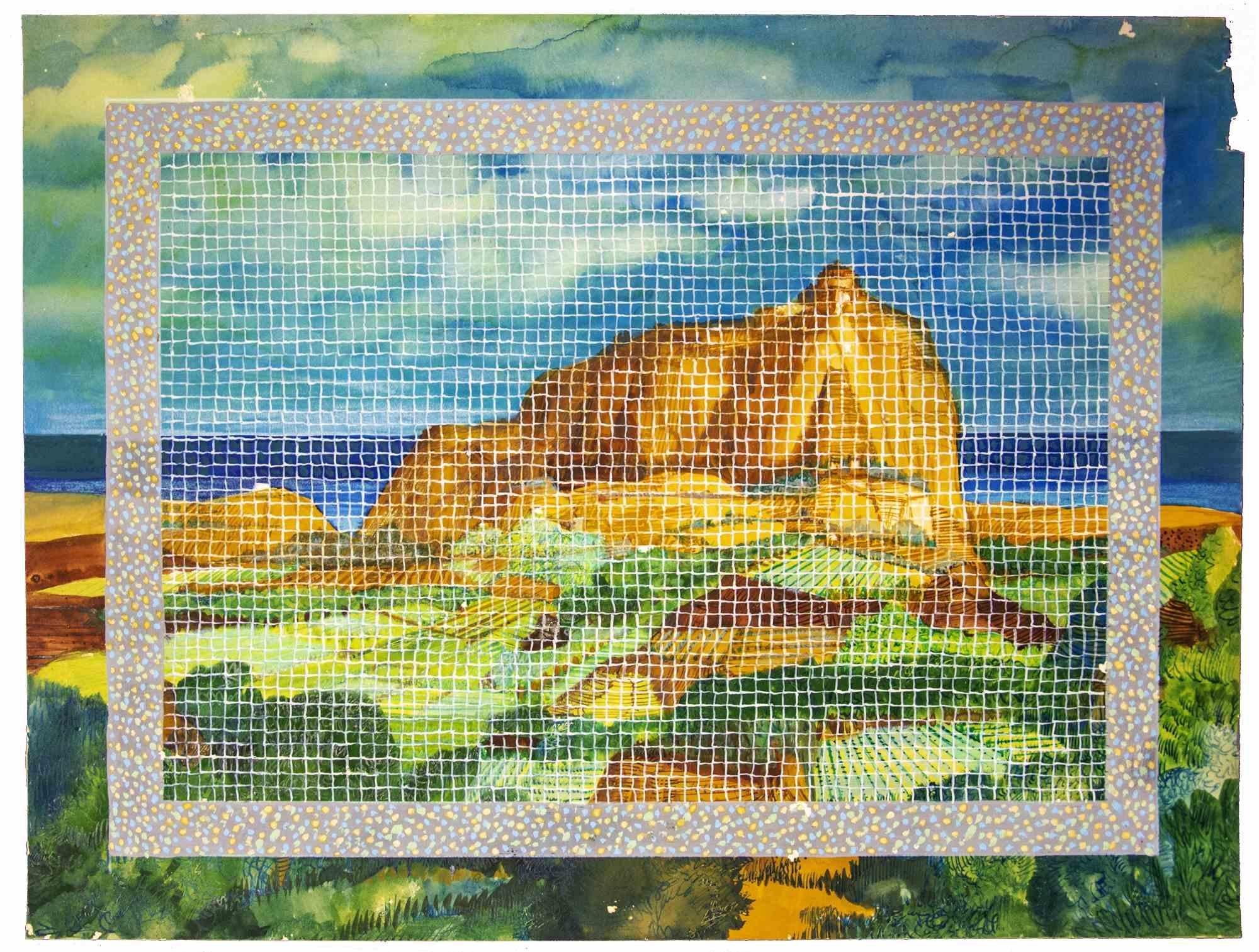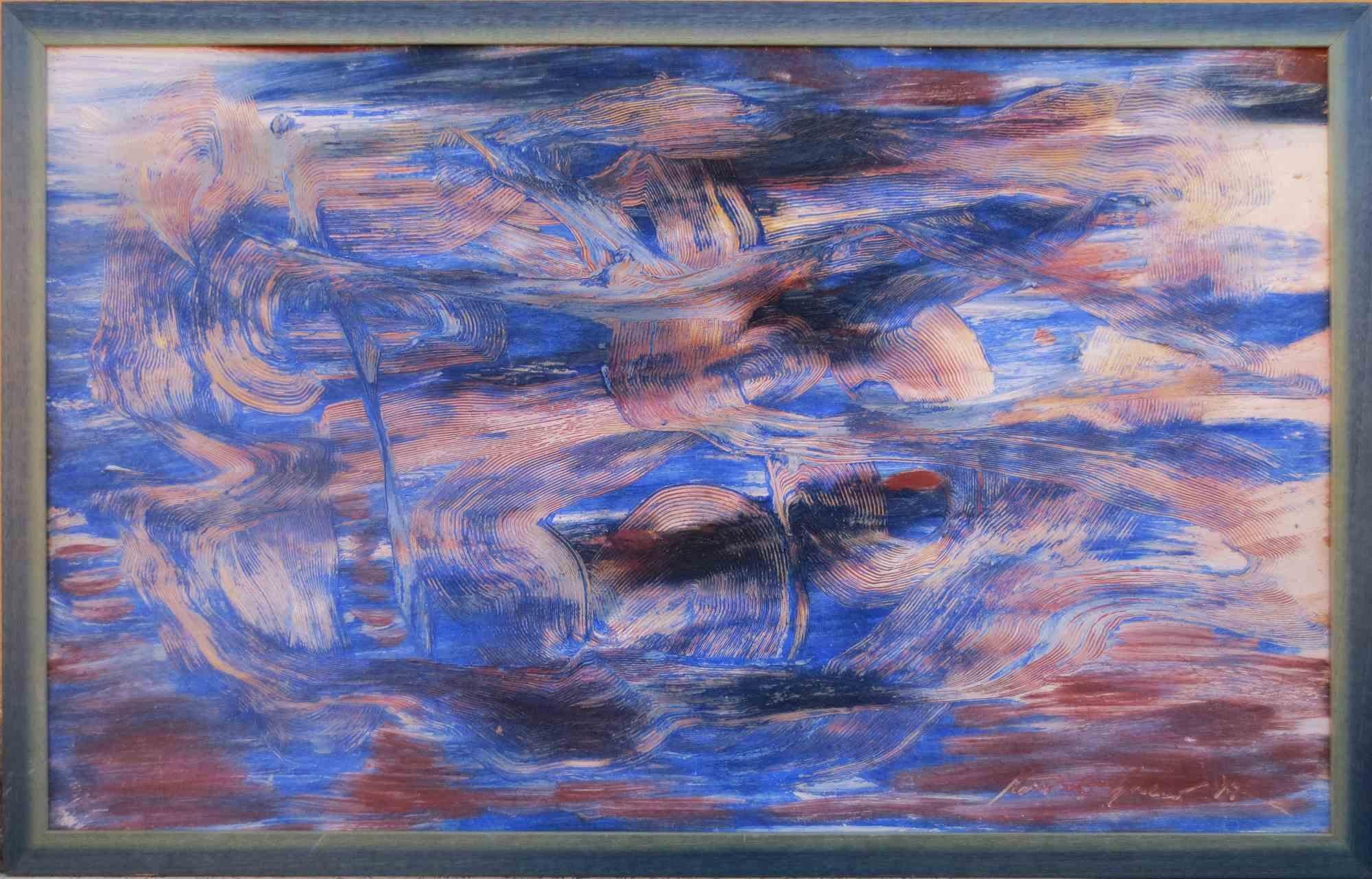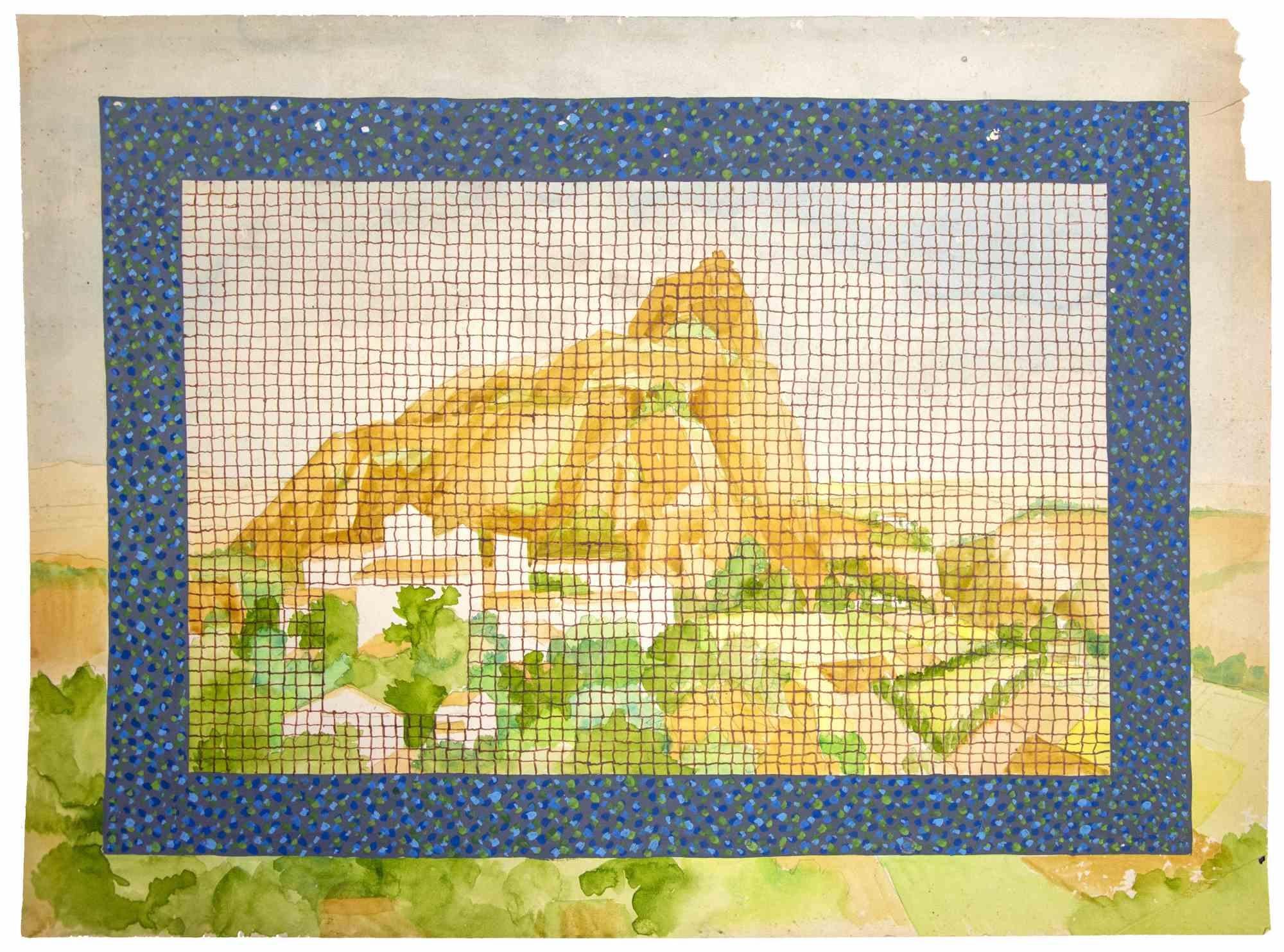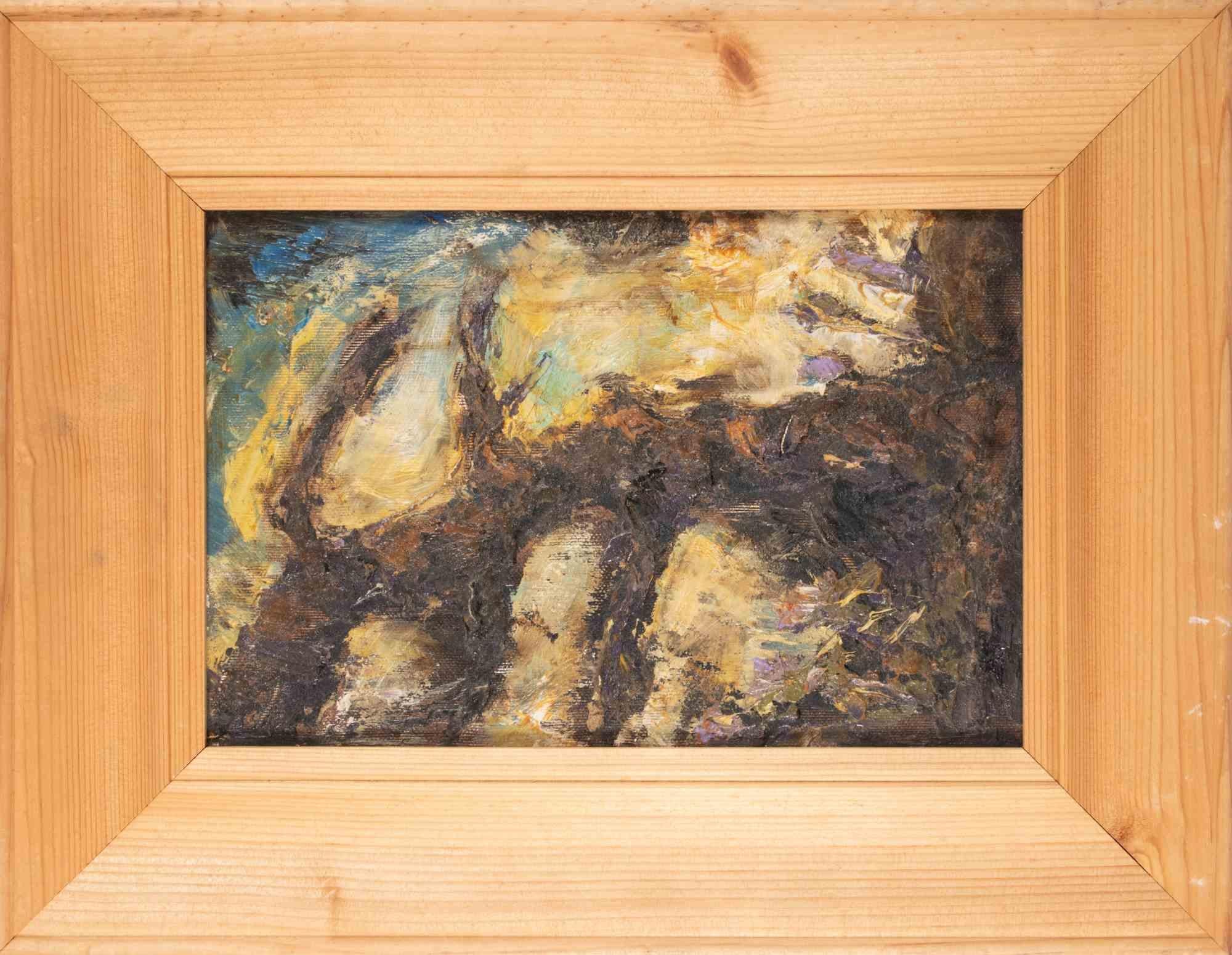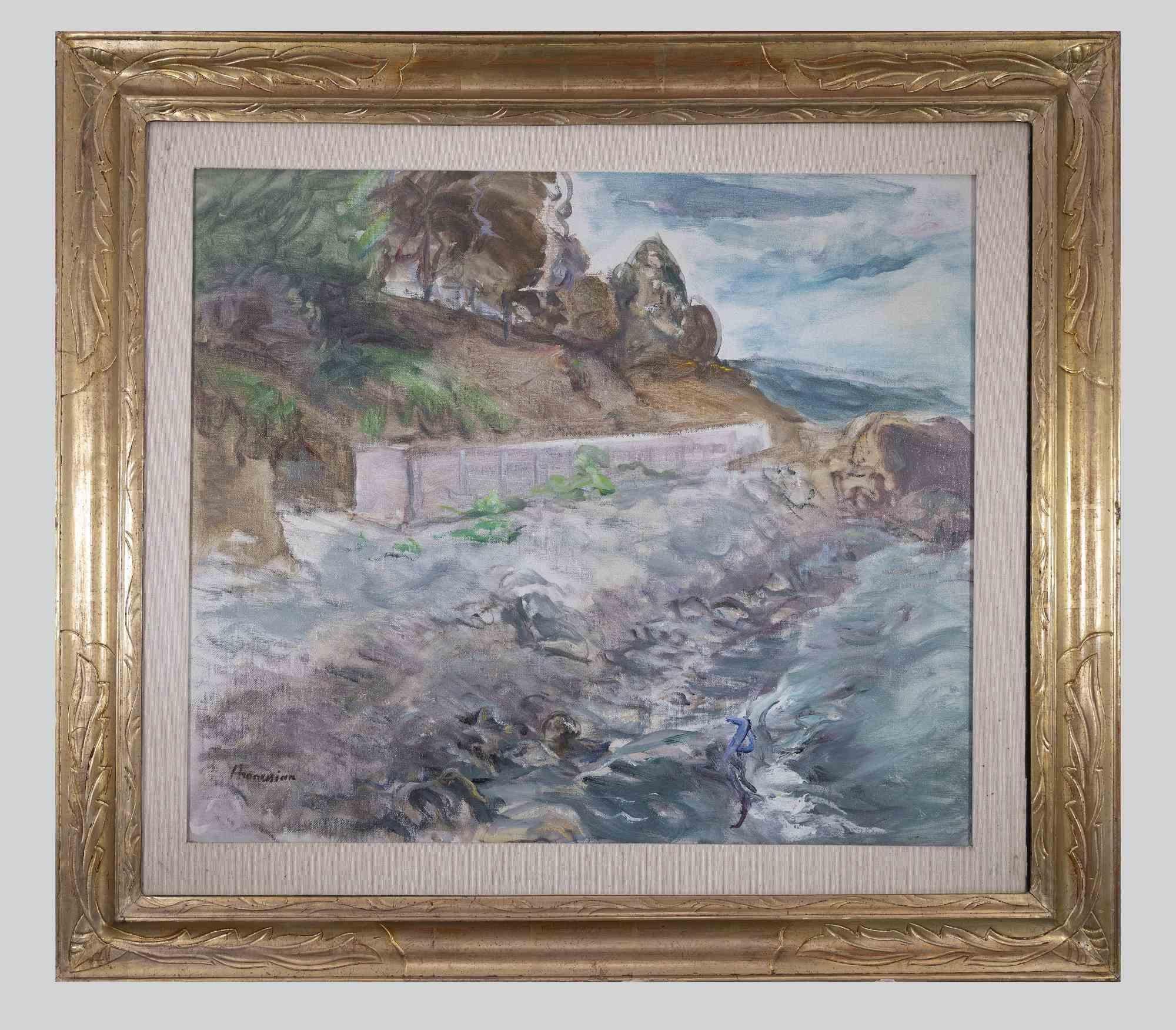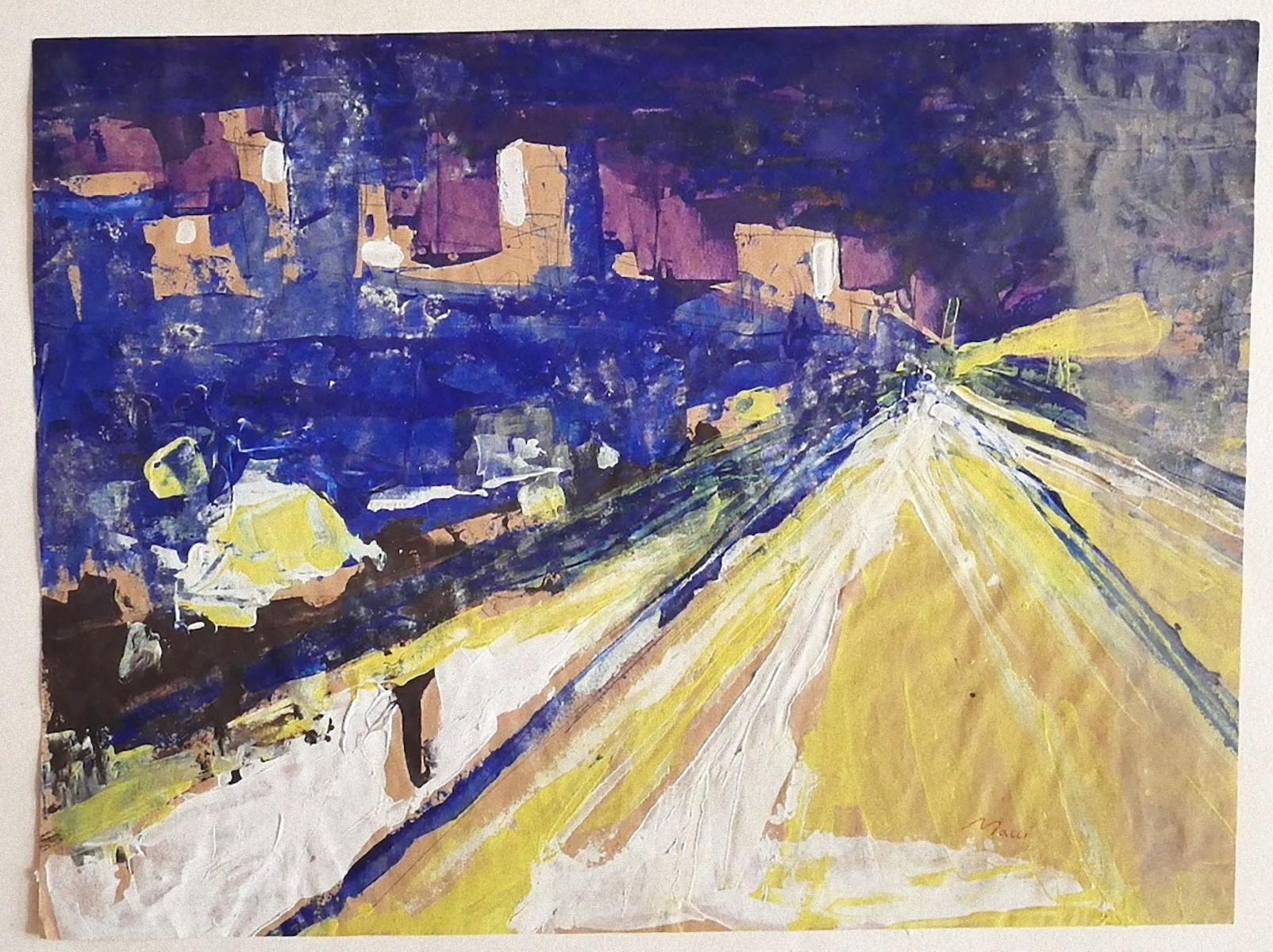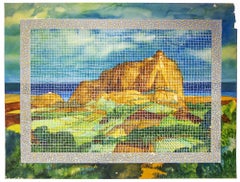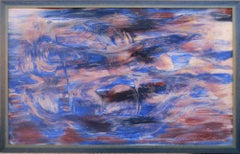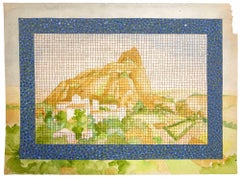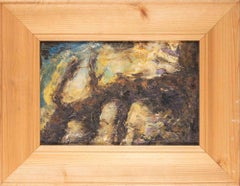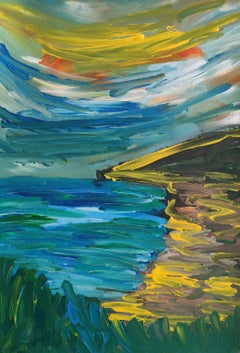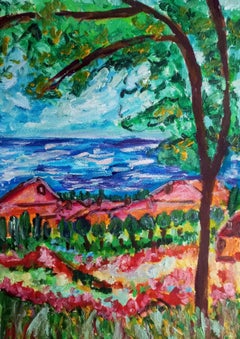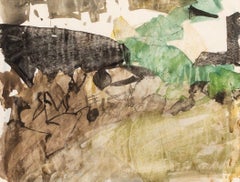Items Similar to Marine Landscape - Tempera by Gian Barresi - 1990s
Want more images or videos?
Request additional images or videos from the seller
1 of 5
Gian BarresiMarine Landscape - Tempera by Gian Barresi - 1990s1990s
1990s
$962.68
£712.72
€800
CA$1,332.89
A$1,455.20
CHF 762.90
MX$17,673.98
NOK 9,527.41
SEK 8,996.42
DKK 6,090.57
About the Item
Marine landscape is an artwork realized by Gian Barresi in 1990s.
Tempera on paper.
50x70 cm not framed.
Handsigned on the lower left margin.
Good Conditions
- Creator:Gian Barresi
- Creation Year:1990s
- Dimensions:Height: 19.69 in (50 cm)Width: 27.56 in (70 cm)Depth: 0.04 in (1 mm)
- Medium:
- Movement & Style:
- Period:
- Framing:Framing Options Available
- Condition:Insurance may be requested by customers as additional service, contact us for more information.
- Gallery Location:Roma, IT
- Reference Number:Seller: T-1380841stDibs: LU650311888532
About the Seller
4.9
Platinum Seller
Premium sellers with a 4.7+ rating and 24-hour response times
1stDibs seller since 2017
7,709 sales on 1stDibs
Typical response time: 2 hours
- ShippingRetrieving quote...Shipping from: Roma, Italy
- Return Policy
Authenticity Guarantee
In the unlikely event there’s an issue with an item’s authenticity, contact us within 1 year for a full refund. DetailsMoney-Back Guarantee
If your item is not as described, is damaged in transit, or does not arrive, contact us within 7 days for a full refund. Details24-Hour Cancellation
You have a 24-hour grace period in which to reconsider your purchase, with no questions asked.Vetted Professional Sellers
Our world-class sellers must adhere to strict standards for service and quality, maintaining the integrity of our listings.Price-Match Guarantee
If you find that a seller listed the same item for a lower price elsewhere, we’ll match it.Trusted Global Delivery
Our best-in-class carrier network provides specialized shipping options worldwide, including custom delivery.More From This Seller
View AllLandscape - Original Tempera by Leo Guida - 1980
By Leo Guida
Located in Roma, IT
Landscape is an original artwork realized in 1980 by the italian Contemporary artist Leo Guida (1992 - 2017).
Original drawing in beautiful colored tempera on ivory-colored cardb...
Category
1980s Contemporary Landscape Drawings and Watercolors
Materials
Tempera
Sea - Painting by Massimo Greco - 2000
Located in Roma, IT
Painting by Massimo Greco, realized in mixed media, stucco and paints on wood.
Framed.
Category
2010s Contemporary Landscape Paintings
Materials
Canvas, Acrylic
Landscape - Tempera by Leo Guida - 1980
By Leo Guida
Located in Roma, IT
Landscape is an original artwork realized in 1980 by the italian Contemporary artist Leo Guida (1992 - 2017).
Original drawing in beautiful colored tempera on ivory-colored card...
Category
1980s Contemporary Landscape Drawings and Watercolors
Materials
Tempera
Landscape - Paint by Paolo La Motta - 2000s
Located in Roma, IT
Oil on canvas realized by Paolo La Motta in the early 2000s.
Includes a contemporary wooden frame cm. 44x34.
Very good condition.
Category
Early 2000s Contemporary Figurative Paintings
Materials
Canvas, Oil
Seascape - Oil on Canvas by Alfonso Avanessian - 1990s
Located in Roma, IT
Seascape is an original oil on canvas painting realized by Alfonso Avanessian in 1990s.
The piece is hand signed on the lower left.
Frame included: 87x91,5 cm.
The painting is in ...
Category
1990s Modern Figurative Paintings
Materials
Canvas, Oil
Landscapes - Original Drawing by Daniele Macci - 2000s
Located in Roma, IT
Landscapes is an original drawing in mixed media on paper realized by Daniele Macci.
Han-signed on the lower right.
Good conditions.
The artwork represents a landscape. The artwo...
Category
Early 2000s Modern Figurative Drawings and Watercolors
Materials
Mixed Media
You May Also Like
Contemporary abstract impressionist seascape seaside acrylic painting on paper
Located in VÉNISSIEUX, FR
This captivating artwork " Island life" depicts a coastal landscape rendered in bold, swirling brushstrokes that convey both movement and emotion.
The artist employs a vibrant pal...
Category
2010s Abstract Impressionist Landscape Paintings
Materials
Paper, Acrylic
Contemporary impressionist seascape nature acrylic painting on paper
Located in VÉNISSIEUX, FR
This vibrant and evocative artwork "My sweet summer Provence " presents a picturesque seaside landscape, painted with bold strokes and a vivid color palette that instantly captivate...
Category
2010s Impressionist Landscape Paintings
Materials
Paper, Acrylic, Watercolor
Coastal Scene, Gouache Painting by Peter Potworowski, 1950s circa
Located in Kingsclere, GB
Coastal Scene, Gouache Painting by Peter Potworowski, 1950s circa
Additional information:
Medium: Gouache
17 x 21.5 cm
6 3/4 x 8 1/2 in
Tadeusz Piotr (Peter) Potworowski was a Polish abstract and figurative painter who lived and exhibited in Paris, Poland, Sweden and England.
Potworowski was born in Warsaw in 1898. After serving in the First World War, Potworowski enrolled at the Warsaw University of Technology to study architecture, though his studies were halted by the Bolshevik campaign. After the end of the Polish-Soviet War in 1921, Potworowski returned to Warsaw and began to study art at the school of Konrad Krzyżanowski. By the following year, he had taken a place at the Academy of Fine Arts in Krakow, where he studied under Józef Pankiewicz. It was Pankiewicz who incorporated Potworowski into the Paris Commute, or Kapists, a group of Polish artists who travelled to the French capital in 1924.
During his seven years in Paris he became personally acquainted with Pablo Picasso, Pierre Bonnard, Jean Cocteau, Constantin Brancusi and attended for a short time Fernand Léger's studio. It was through this job that he met his first wife Magdalena Mańkowska, a student of anthropology in Paris. After marrying in France, and visiting Britain in 1928, the couple returned to Poland in 1930, where their first son John was born.
In 1931, Warsaw was the locale of the first Kapists exhibition, entitled New Generation, which took place at the Artist's Club, Hotel Polonia, and the Institute of Art Propaganda. Here, Potworowski received a prize for his painting Three Women in the Interior. The following year, he held his first solo exhibition at the Makowski Salon in Poznań. This success was sustained through 1937 when the artist received a silver medal at the International Exhibition of Art and Technology in Paris, as well as the award from the Minister of Foreign Affairs. After this strong development, Potworowski had a travelling solo exhibition arranged, held in 1938 at the Institute of Propaganda of Art in Warsaw and then in Lviv.
Following the invasion of Poland in 1939, Potworowski escaped to Sweden via Lithuania. It was from here that the artist, with his wife and two young children, made his way to Britain, arriving in 1943. After serving in Scotland, Potworowski settled in London, and in January 1946, an exhibition of 33 of his works was held at the Redfern Gallery. This was followed by regular exhibitions with the Redfern, Gimpel Fils (1948 onwards) and The London Group, to which he was elected a member in 1949. He was also the president of the Association of Polish Artists and published regularly in the monthly magazine "Nowa Polska".
Potworowski's teaching career included eight years as Professor of Painting at the Bath Academy of Art, Corsham (1949-57), where he had considerable European influence, specifically on abstraction, and was acknowledged by contemporaries including Peter Lanyon, Bryan Wynter...
Category
20th Century Abstract Paintings
Materials
Gouache
'Amalfi Cove, Italy' mixed media circa 2005
Located in Frome, Somerset
'Amalfi Cove, Italy.' by Andy Gradwell circa 2005. Watercolor and pastel on paper. signed.
Glazed oak wood frame 43cmx53cm
Dry mounted painting 27cmx38cm
A capriccio view of one of...
Category
Early 2000s Expressionist Landscape Paintings
Materials
Watercolor
'Expressionist Seascape', Accademia di Belle Arti, New York, ASL, CSFA, MoMA
Located in Santa Cruz, CA
Signed lower right, 'DeMartis' for James Joseph DeMartis (American, 1926-1996) and dated 1964.
Born in Queens, New York, James Joseph DeMartis served with distinction in World War I...
Category
1960s Landscape Drawings and Watercolors
Materials
Paper, Pastel, Watercolor, Gouache, Graphite
Abstract expressive nature landscape sea beach acrylic painting on paper
Located in VÉNISSIEUX, FR
This vibrant landscape painting, "Summer Breeze Escape", by French artist Natalya Mougenot, showcases a dynamic interplay of bold brushstrokes and vivid colors, capturing a coastal scene with striking intensity. Part of her nature-focused series, the piece celebrates the artist’s deep love for the sea, beach, and the natural world.
The sky is painted in dramatic strokes of red and blue, evoking a sense of tumultuous energy, while below, the sea shimmers in shades of blue and green, reflecting the atmosphere above. A rugged coastline, rendered in rich browns and greens, divides the scene, enhancing its natural beauty. Lively grasses in yellow, green, and red tones in the foreground create texture and movement, adding depth to the composition. Through contrasting colors and expressive brushwork, Mougenot powerfully captures the raw energy of nature, invoking a sense of awe and wonder. The artwork’s emotional intensity and masterful use of color invite viewers to immerse themselves in its vibrant world.
Created in the artist’s Lyon...
Category
2010s Abstract Abstract Paintings
Materials
Paper, Acrylic
More Ways To Browse
Igor Volkov
Painting Bathing
Seville Spain
Insect Painting
Old Master Painting French
Photography Of London
Restaurant Painting
Bay Area Figurative Art
Bull Oil Painting
Jacques Louis David
19th Century Children Paintings
Anne Marie Migette Perard
Jazz Club
Oil Painting Musician
Tel Aviv Painting
Painting Bicycle
Twin Paintings
Two Young Girls
